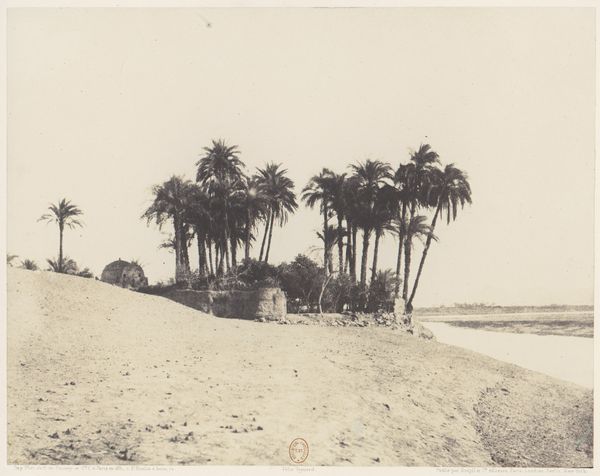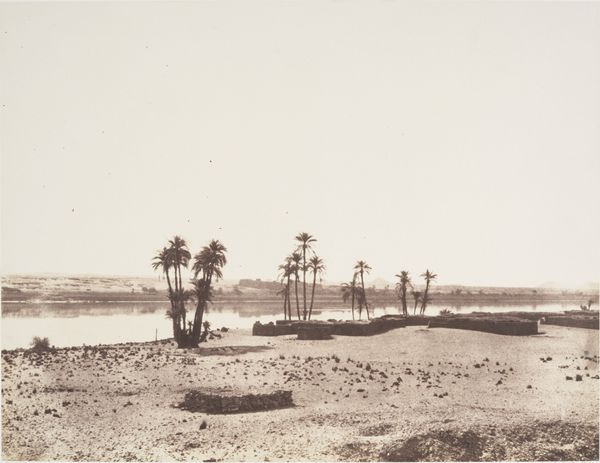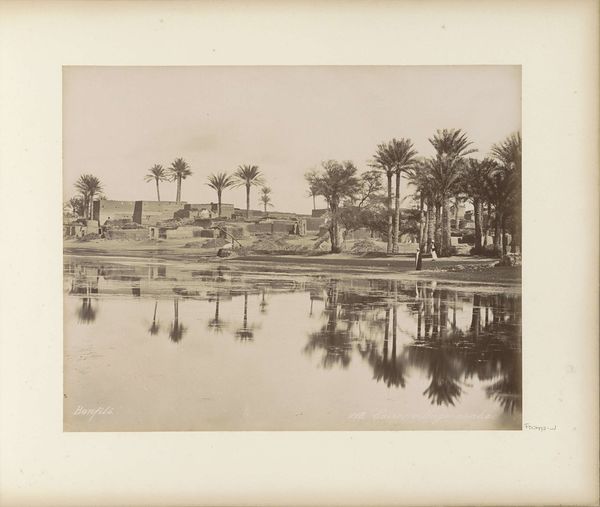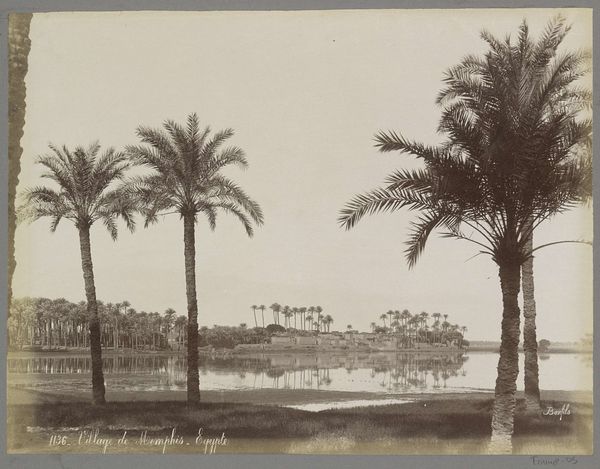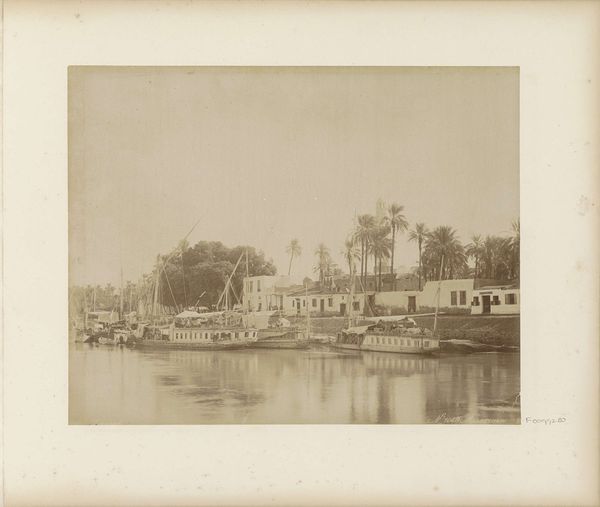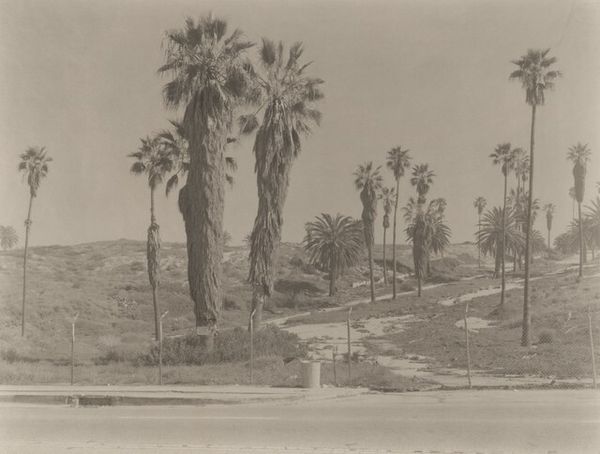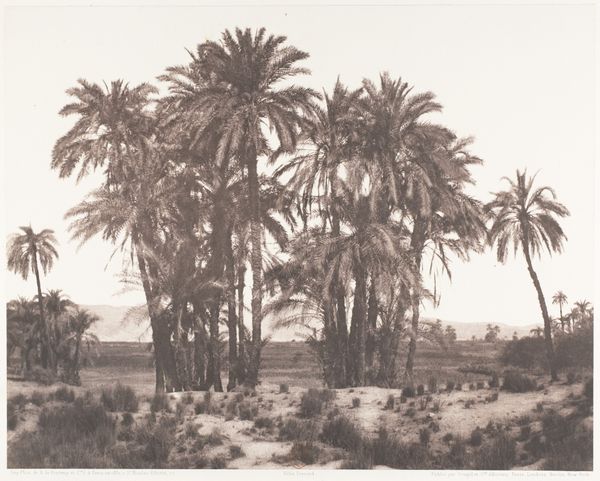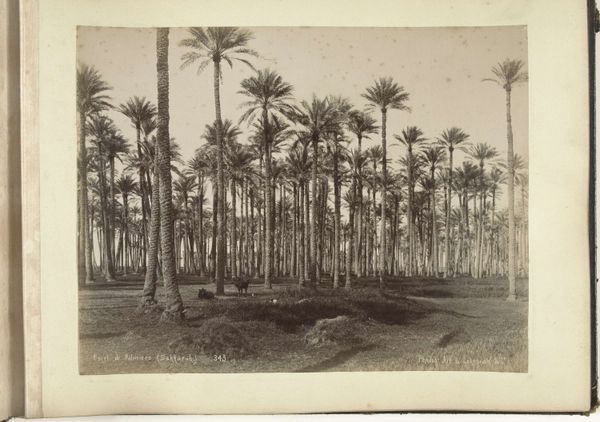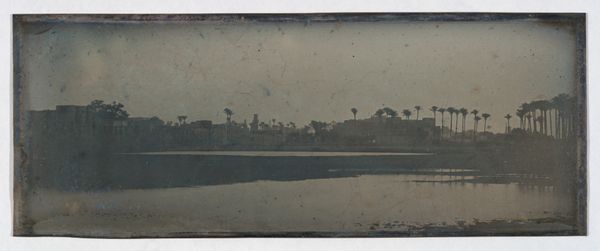
El-Nâcérah, Dattiers, Rives du Nil et Barques 1851 - 1852
0:00
0:00
photography, gelatin-silver-print
#
landscape
#
photography
#
orientalism
#
gelatin-silver-print
Dimensions: 23.2 x 23.9 cm. (9 1/8 x 9 7/16 in.)
Copyright: Public Domain
Curator: This gelatin silver print, taken by Félix Teynard between 1851 and 1852, is entitled "El-Nâcérah, Dattiers, Rives du Nil et Barques," which translates to "El-Nâcérah, Date Palms, Banks of the Nile, and Boats." It's quite striking, isn't it? Editor: It is. My immediate impression is of a serene stillness, almost dreamlike, heightened by the sepia tones and soft focus. The tall palm trees and their reflected shadows create a sense of depth and, to me, evoke thoughts of both abundance and transience. Curator: Yes, Teynard was part of a wave of European photographers who journeyed to Egypt in the mid-19th century. This image exemplifies Orientalism, a Western fascination with the Middle East that often exoticized and romanticized the region for a European audience. Editor: Absolutely, the palm tree is heavily symbolic within both Western and Middle Eastern cultures, representing life, sustenance, victory, and even paradise. It bridges both worlds. Do you think Teynard was deliberately employing that loaded imagery to construct a desired narrative for his Western viewers? Curator: I think that is highly likely. His work contributed to a visual archive of Egypt, feeding into existing colonial power dynamics and cultural assumptions. Early photography like this wasn't just about capturing a scene; it was about shaping perceptions. The angle, the selection of what's included, even the chemical processes contribute to meaning. Editor: I agree. And the subtle inclusion of the boats hint at journeys, trade, and human presence but they remain distant. The focus is on nature, or rather a Western conception of nature in the Orient. I am interested in what visual shorthands he employed that immediately spoke to and confirmed his audiences' assumptions. Curator: Exactly, images like these had a powerful effect, shaping the visual imagination of Europe regarding the Middle East and influencing subsequent artistic and political movements. The question of authorship and representation here are important, I think. Editor: For sure. Looking at it now I am left contemplating not just the physical location, but also the layers of cultural meaning imposed upon it and how those symbols endure even today. Curator: A great point and indeed, considering photography's early role in constructing ideas of place, this piece continues to raise essential questions about perspective and power.
Comments
No comments
Be the first to comment and join the conversation on the ultimate creative platform.

